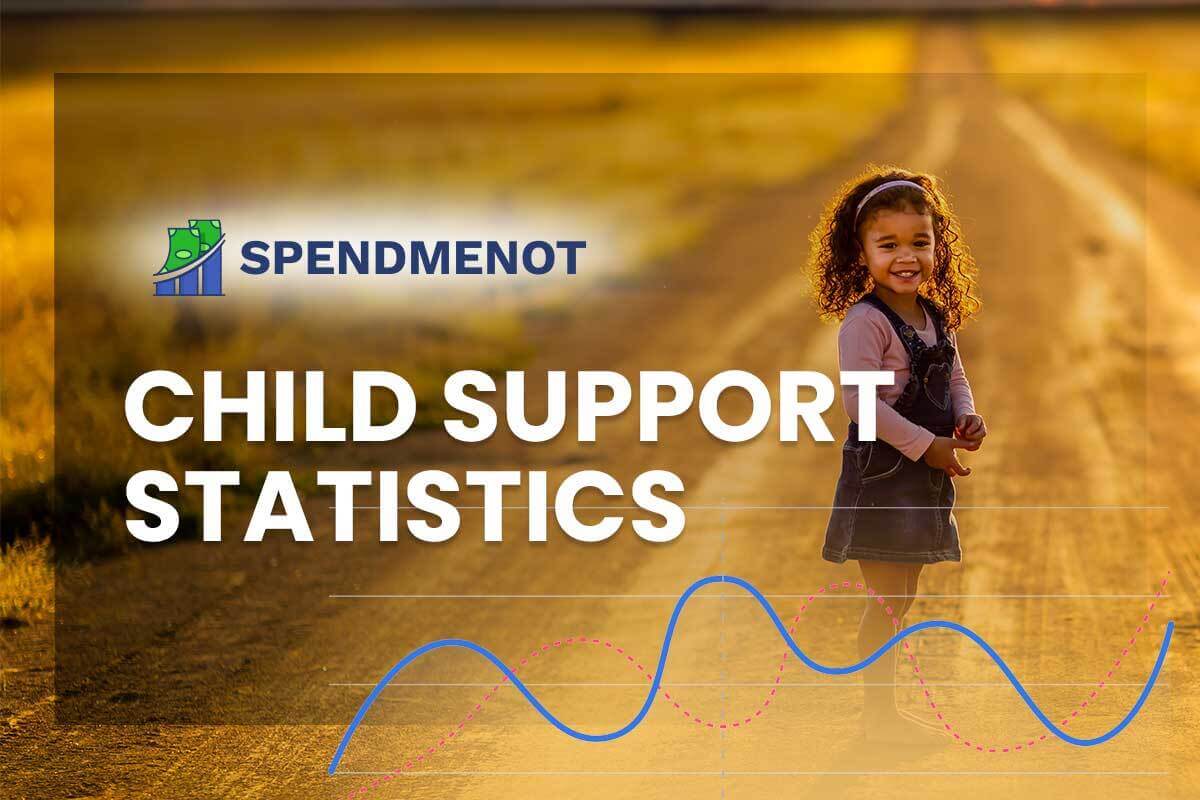30+ Student Loan Debt Statistics to Know in 2023
Last Updated: March 10, 2023
The value of a college degree has never been higher.
At least in financial terms.
Over the previous decade, the cost of university education has grown three times quicker than other school-related expenses.
Student loan debt statistics show that most college students finance at least a portion of that cost by taking out student loans.
Let’s check some of the most important stats first:
AMAZING Student Loan Debt Statistics (Editor’s Choice):
- About $1.05 trillion of Americans’ student loan debt is in the form of direct loans.
- Student loan debt in the U.S. reached another all-time high of $1.4 trillion in the first quarter (Q1) of 2019.
- Graduates of private nonprofit four-year schools carry an average student loan debt of $32,600.
- As of mid-2018, women hold nearly two-thirds of the student loan debt in the United States, of almost $900 billion.
- Americans aged 35-49 have the highest student loan debt, with a total of $557.6 billion.
- Average student loan balances for those who earned their Ph.D. increased by 104%.
- Over the past decade, the delinquency rate for student loans 90 or more days delinquent has climbed from 7.6% to 11.5% as of the third quarter of 2018.
Repaying those student loans can be a serious obstacle further down the line.
If you are a student loan borrower, the statistics listed below may help you see the state of student debt and how it’s impacted those saddled with it.
With their help, you can make better decisions with your education and finances.
Ready for it?
College Debt Statistics
We start with the basics. Here are some general facts about the student debt market.
1. Student loan debt in the U.S. reached an all-time high of $1.4 trillion in the first quarter (Q1) of 2019.
(Source: Investopedia)
That’s a rise of 116% in 10 years. It is one of the US’ most significant and disseminated financial burdens to date. The country has $35,359 in student loan debt per capita. This is an increase of 26% in five years and a 2% rise in contrast with the first quarter of 2018.
2. The average student loan monthly payment falls between $300 and $400.
(Source: CNBC)
The average annual payments for student loans are substantially higher than the overall averages nationwide. The regular student loan payment falls in the $200 and $299 per month range. However, the average college graduate with 0-5 years of experience earns $48,400.
That means that college graduates need to spend, on average, about 10% of their earnings on student debt payments.
Stats show that those with a bachelor’s in education and communications had lower monthly payments (in the low $300 a month range) than those with engineering or physical science degrees (in the $375 to $395 a month range).
If you are looking for a way to lower your monthly loan payments, check out our picks for the best student loan refinance companies.
3. 99% of people applying for student loan forgiveness are being rejected.
(Source: Forbes)
Average student debt stats from 2019 show that of the 86,006 people applying for student loan forgiveness, only 864 received approval. One of the major reasons for so many rejection letters is because applicants didn’t meet the standards for qualifying payments. For payments to be recognized as “qualifying” they must be paid through the Income-Based Repayment Plan (IBR), Pay As You Earn (PAYE), or Income Contingent Repayment Plan (ICR).
4. Private nonprofit four-year school graduates have an average student loan debt of $32,600.
(Source: The College Board)
The average debt after college for all private nonprofit school graduates is $26,900. Luckily the number of those earning their undergraduate degrees with loans is falling. In 2006-2007, 66% of graduates had a student loan debt, while in 2016-2017 that amount went down to 61%.
Purdue University in Indiana is one of the private nonprofit schools that is trying to lower these numbers even further with various programs, funds, and a tuition freeze.
5. 20% of individuals with student loans were behind on their payments in 2017.
(Source: Institute for College Access and Success)
Considering the average amount of student loan debt and the fact that 65% of graduates who finished school in 2017 took out student loans, it is no surprise that a fifth of all borrowers were behind with their payments.
6. $1.05 trillion of Americans’ student loan debt is in the set of direct loans.
(Source: Federal Student Aid)
That’s been a steep rise in direct loans during the last five years; five years ago, the amount was $508.7 billion. 52% of direct federal loan debt is in compensation. Approximately 8% is in default because the borrower hasn’t carried out a settlement in nine months or longer.
The latest student loan debt statistics point out that the remaining 40% is “on hold” for various reasons. 13% is being occupied by students still in school, 11% is in forbearance, 11% is in deferment, 5% is in a grace period, 1% is being classified as “other”.
7. Four states represent over 20% of all student loan borrowers in the US.
(Source: Forbes)
According to the recent college debt statistics, 20% of borrowers live in four US states and owe over $340 billion. A total of 3.4 million borrowers live in California, followed by Texas (2.9 million), New York (2.2 million), and Florida (2.2 million).
The respective overall student loan debt balance for these four states is $111.7 billion, $85.4 billion, $73.5 billion, and $72.8 billion.
8. Wyoming, Alaska, and North Dakota are the states with the lowest college balance owed.
(Source: USA Today)
In 2019, the total student loan debt in Wyoming was just $1.5 billion. Students in Alaska owed $2.1 billion in student loans, while those in North Dakota owed $2.3 billion.
9. Among the Class of 2018, 69% of college students took out student loans.
(Source: Forbes)
For this class, 14% of the parents contributed to $35,600 in federal Parent PLUS loans, which have even greater interest rates than the standard loan. However, according to the Federal Reserve System, almost one-fifth of the students were behind on their payments. Roughly half of the borrowers could afford to pay off debts. The average debt of $29,800 includes both federal and private student loan debt for the Class of 2018.
10. Over the past decade, the delinquency rate for student loans of 90 or more days delinquent has climbed from 7.6% to 11.5%.
(Source: Forbes)
As alarming as this 11.5% percentage is, it could be an underestimate of the definite rate of delinquency. This is because about half of outstanding loans are in deferment, grace periods, or forbearance. Federally backed loans, which make the majority of student borrowing, can be postponed until the student graduates. Payment can even be deferred for another six months after graduation. If this wasn’t the case, student loan stats would be showing a much larger delinquency rate.
11. Only 6% of borrowers have more than $100,000 total student loan debt.
(Source: The College Board)
Surprisingly, those who borrow over $100,000 most commonly come from high-income families. In, 2015-16 students from families with earnings above $120,000 borrowed about $10,500 more than students from families with earnings below $30,000. This piece of national student debt loan data applies only to those borrowing for an undergraduate degree.
12. 19% of US adults have between $25,000 and $50,000 in student loan debt.
(Source: Pew Research Center)
Close to 8.5 million Americans with student loans have a debt that ranges between $25,000 and $50,000. According to various sources, those whose student loan debt is in this range represent 83% of the cumulative share of borrowers who contribute toward the total US student loan debt.
13. There are 44.9 million millennials in the US (ages 25–34), but only 15.3 million of them have student loans.
(Source: Census Bureau)
This shows that 66% of those aged 25-34 have no student debt to deal with. That’s because many of them haven’t made it to college. Among this generation, just 49% have an associate degree or higher.
The average millennial with a bachelor’s degree has a debt of $28,500, average student loan debt in America data shows. Those millennials would have 240 monthly payments (20 years) of $181, through an ideal repayment plan.
14. Federal Family Education Loans (FFEL) account for 22% of the student loan debt in America.
(Source: US Department of Education)
As a category, the FFEL includes several subtypes of loans. These are the FFEL Plus, FFEL Consolidation, Subsidized Stafford, and Unsubsidized Stafford. In the US, there are 14.9 million borrowers of FFEL loans who owe $305.8 billion.
15. Federal Perkins loans made by individual schools based on student need account for only 1% of total borrowing.
(Source: Forbes)
The average debt of college graduates can be a highly variable number, depending on the type of loan they’ve taken. A Perkins loan is a student loan for low-income students that has a fixed regular repayment of 5% on 10 years. Borrowers could pay back the loan at the end of the 10th month after they finished, withdrew or dropped out of their school.
However, Perkins loans seem to lose fame as the number of borrowers is continually dropping. In 2017 Q4, almost 2.5 million borrowers owed $7.6 billion via Perkins loans. This figure dropped to 2.2 million students in 2019. The amount owed to Perkins loans decreased to $6.6 billion in the second quarter of 2019.
Student Loan Debt Facts and Stats
It’s time to get into more detail.
16. 65% of last year’s college seniors who graduated from public and private non-profit colleges had student loan debt.
(Source: Institute for College Access and Success)
Borrowers owed an average of $29,200, 2% greater than the 2017 average of $28,650. There’s a link between college debt and the type of school too.
No one is surprised by the great debt burden.
In 1985, the average annual tuition fees, plus room and board for full-time undergraduate students at a four-year public university, were at $3,859. 30 years later, in 2015, the average cost went up to $19,189. The average debt after college for private schools over the same period went from $9,228 to $39,529. For the school year of 2018-2019, the cost of attending Harvard University, without financial aid was at $46,340 ($67,580 for tuition, room, board, and fees combined).
17. 17% of 2018 graduates have private student loans, up from 14% in 2016.
(Source: CNBC)
Despite the reasonably low percentage of students with private loans, there is an issue; these loans can come with interest rates as high as 14%. The average student also carries more than $900 in credit card debt, research on the average college debt finds.
18. Average student loan balances for those who earned their Ph.D. has increased by 104%.
(Source: CNBC)
Ph.D. graduates owe an average of $98,800 in student loans. This figure doesn’t include those getting their Ph.D. in the field of education. From 1999-2000 to 2015-16 academic years, the average loan balances for those who got their Ph.D. raised from $48,400 to $98,800. The average student loan debt for those in the field of medicine increased by 97%, from $124,700 to $246,000, during the same period.
Data shows that the median weekly income for a person with a doctoral degree is $1,825, or around $94,900 per year. The median weekly incomes for other types of degree are as follows: $1,198 (around $62,296 a year) for bachelor’s degree holders and $730 a week (around $37,960 per year) for those who never went to college.
19. From 1999-2000 to 2015-16, the average student debt total for master’s degree holders increased by up to 71%.
(Source: The National Center for Education Statistics)
For some fields, such as the Master of Education degree, a shift of 71% (to $55,200) was noticed during the period. Master of Arts degree saw a rise of 65% (to $72,800). The student loan debt in master’s programs for science and “other” degrees had an average increase of 39% (to $62,300) and 59% (to $75,100) during these 6 years.
20. Women currently hold close to two-thirds of the student loan debt in the US, with a total of $900 billion.
(Source: American Association of University Women)
Data on the average undergraduate debt shows that approximately 41% of female undergraduates had debt during the 2015-16 academic year, compared to 35% of their male peers. As of 2016, women with bachelor’s degrees had an average debt of $21,619, while men’s average debt was at $18,880.
A part of the reason for this is that women have a tougher time repaying the debt because of the gender wage gap. One year after graduation, female college graduates with full-time jobs are making 18% less than males with the same education, working in the same position. Four years after graduation, that gap gets even larger, climbing to 20%.
21. 34% of female college graduates experience financial difficulties.
(Source: American Association of University Women)
Outstanding student loan debt is an issue for around 44 million Americans. 24% of male college graduates have experienced financial difficulties and issues with student loan repayment. 34% of their female peers have had the same negative experience.
22. In a study of 1,400 college graduates, 50% of females reported that their parents did not help them pay for college.
(Source: Lendedu)
According to the study, male college graduates have another major advantage in student debt reduction. 43% reported that their parents did not help them pay for college. Only 6% of the female college graduates reported that their parents paid for most of their college education, compared to 10% of male college graduates.
The average student loan payment is much higher for female graduates. Female college students turn out to have a more difficult time affording their college education, as their parents don’t assist them as much.
23. Only 6% of white Americans are behind on their student loan payments.
(Source: Lendedu)
White Americans pay off their student loans quicker than the other races. 55% of white Americans have already paid off their student debt, while 39% have ongoing payments to deal with. Almost 22% of these individuals belong to the 18-29 age group.
24. About 96.1% of black Americans received financial aid in 2015-16.
(Source: American Council on Education )
Researching the current student loan debt by demographics, we learned that African-American students are the most likely to require financial aid. Compared to Caucasian (86.4%) and Asian students (83.7%), African-American students are more likely to take out federal loans to finance their higher education.
Limited financial resources, a lower level of academic preparedness, as well as lower earnings are just some of the reasons behind student loan debts of black students.
25. Black college graduates have $34,010-22,303 in student loan debt, depending on the type of degree.
(Source: American Council on Education )
We’ve already learned what percentage of college students have student loans, but let’s get a little deeper into the demographics:
Black students’ average debt for undergraduate students is $7,375 higher than for their white peers – $23,420, compared to $16,046.
For advanced degrees, the difference is even more pronounced. Black students are, roughly, twice as likely to have graduate school debt (40% in contrast with 22 %).
26. 21% of Hispanic college graduates are behind on their loan payments.
(Source: CNBC)
Considering how much student loan debt is there, we shouldn’t be surprised that people are having a tough time keeping up with payments.
Hispanic college grads appear to be the most vulnerable group. 21% of them are behind on their loan payments. 47% of Hispanic students have not yet started to repay their debt.
27. 62% of Americans aged 18-29 who have a bachelor’s degree also have student loan debt.
(Source: Federal Reserve)
Average student loan debt by age statistics show that a large portion of recent college graduates had to take loans:
Research shows that only 8.1 billion borrowers are 24 or younger. 62% of young adults with a bachelor’s degree or higher education have student debt. Student loan debt is less common among older age groups. 22% of people aged 30 to 44 have student loan debt. Only 4% of those 45 and older share their fate.
28. Americans aged 35-49 have a total of $557.6 billion in student loans.
(Source: Lendedu)
The highest student loan debt ever, at more than $1.4 trillion, is a major cause for concern. A large chunk of this debt belongs to those aged 35-49. It is, surprisingly, still growing. In 2019, their student loan debt was $557.6 billion. That’s more than $35 million higher than in 2018 when it was at $522.4 billion.
However, most individuals who have a student loan belong to the 25-34 age group. Their total debt in 2019 was $497.6 billion. This indicates that those aged 35-49 took higher loans, with higher interest rates. They are also most lenient with payments.
29. 54% of those aged 18-29 need a student loan to get an associate degree.
(Source: Federal Reserve)
College debt statistics show that this rate for other age groups was noticeably smaller:
- 48% of those aged 30-44 needed a loan to afford an associate degree
- 35% of those aged 45-59 needed loans
- 18% of those who are now 60+ required a student loan
Associate degrees are more affordable and quicker to obtain. However, the average income for professionals with an associate’s degree is lower than for those with a bachelor’s – going up to $45,700. Those with a bachelor’s earn an average of $59,124 per year.
30. 59% of those aged 18-34 believe four-year schools are worth the cost.
(Source: APM Research Lab)
Keeping in mind what is the average student loan debt, some doubt the value of higher education. Still, the majority of US adults agree that the cost is justified.
59% of those aged 18-34 find education to be worth it. The same rate applies to those aged 35-54. It’s remarkable that so many millennials and Generation Z adults share this view.
Overall, about 36% of all American adults, regardless of their age, believe college is not worth the price.
Conclusion
Everyone recognizes that student loan debt is a crisis, but not as many people understand just how serious it is. It’s likely that will continue going up as college costs rise. Best case scenario, it will remain steady at already inflated rates. The student loan debt statistics above show that this is an issue for millions of Americans.
Students who borrow exceedingly have a high risk to fall behind on their payments. The best solution, of course, is to hold debt as low as possible.
This is, unfortunately not an option for everyone. Those who fall behind with payments should look at various options at their disposal, such as student loan refinance, loan consolidation and many others.
Student loan debt statistics show us that this is a problem that needs solving as fast as possible. What is your experience with student loan debt? Do you have any ideas how to deal with the issue? Share in the comments!
You may also be interested in:
Marrying Someone with Student Loan Debt
Sources
- Investopedia
- CNBC
- Forbes
- Forbes
- Forbes
- Forbes
- Forbes
- The College Board
- Institute for College Access and Success
- Institute for College Access and Success
- Federal Student Aid
- USA Today
- Pew Research Center
- Census Bureau
- US Department of Education
- American Council on Education
- CNBC
- CNBC
- CNBC
- The National Center for Education Statistics
- American Association of University Women
- Lendedu
- Lendedu
- Federal Reserve
- APM Research Lab










